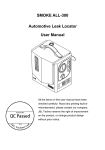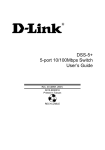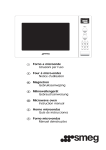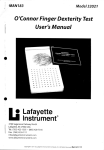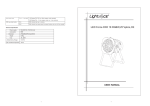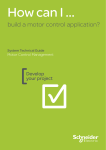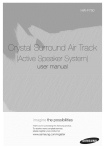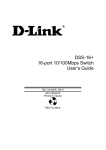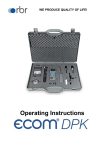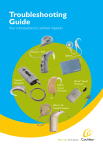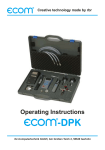Download ALL100 usermanual
Transcript
Automotive Leak Locator ALL-100 User Manual 1 Structure Instruction Main Unit a) Operation film b) Flow regulating Valve c) Prompt Light d) Power Switch & Fuse Holder e) Battery Jump Cable f) Smoke Output Tube g) Dip Stick (Checking oil level) h) Handle Accessories i) Cap Stopples j) Exhaust Cone Adaptor k) OBD-II Service Port Adaptor l) Schrader Valve Removal Tool m) Bottle Oiler n) Flashlight Components and Accessories Details The following list is designed to familiarize you with thelocation and function of the operational components of themachine. The list also includes the supplied accessories andhow to use them. a) Operation film The LED display set time with two digital. Set operation time by press “time” key. Start or stop operation by press “Start/Stop” key. b) Flow Control Valve 2 In many cases excessive smoke exiting a leak may make it difficult to determine the exact location of the leak. The purpose of the Flow Control Valve is to decrease the amount of smoke exiting a leak so that its position may be pinpointed without the masking effect of excessive smoke. Turn clockwise to decrease flow, counterclockwise to increase flow. This valve is also used to lock out the system under test and observe any pressure decay on the pressure gauge. c) Prompt Light When you get ready for check the pipeline system, turn on the machine, set the check time and press Start/Stop key, the machine will produce smoke and the smoke will flow in the pipeline system. When the smoke full of the pipeline system the Prompt Light will light on and you might check the leak location. When the setting time end the Prompt Light will flash and the machine will stop producing smoke. d) Power Switch & Fuse Holder Power Switch control the machine power supply. Fuse inside Fuse Holder to protect the circuit at overcurrent. e) Battery Jump Cable The machine is automotive battery powered. The machine is equipped 2.5 meters battery Jump Cable, which used to connect to the automotive battery with crocodile clip. f) Smoke Output Tube The Smoke Output Tube is 2.5 meters long with a cone-shaped nozzle. Insert cone-shaped Supply Nozzle into system to make smoke flow in and be tested. g) Dip Stick (Checking oil level) The Dip Stick is located on the top rear of the machine, which function is to 3 check and confirm proper oil level. h) Handle The machine equipped a handy plastic handle for conveniently carry the machine. i) Cap Stopples Description: An assortment of red Cap stopples ranging from3/16” to 3.9” is provided with your ALL-100. Function: Cap Stopples are used to seal openings in the system under test. ALL-100 stopples has been designed to seal most automotive. j) Exhaust Cone Adaptor Description: The Exhaust Cone Adapter is a black rubber conethat tapers from 3” to 1” in diameter and is 6 inches in lengthwith a short length of 3/8 hose at its center to direct the smokethrough. Function: The Exhaust Cone Adaptor is a very useful tool. The adaptor is designed to help find exhaust leaks by inserting it into the tail pipe and filling the cold exhaust system with smoke. By inserting the supplied 3/8” Cap Stopple into the hose leading from the Exhaust Cone, it also serves as a Stopple to seal the exhaust while testing for vacuum leaks under the hood. The Exhaust Cone Adaptor also works well to seal the intake tube at the air filter box and allow smoke to enter the engine without disconnecting anything else. k) OBD-II Service Port Adaptor Description: The Service Port Adaptor is a female brass fittingwith a 2” length of black 3/8” diameter hose attached. Function: The Service Port Adaptor is designed to connect the Smoke Supply Nozzle to the OBD-II EVAP Service Port. Thisport provides access to the Fuel Vapor Recovery System (EVAP) for inspection and test. Connecting the ALL-100 to this port allows the technician to determine if a 4 leak exists and to quickly locate the leak with smoke. Note: The Schrader Valve must be removed from the service port before installing the Service Port Adaptor. This valve has left-hand threads. l) Schrader Valve Removal Tool Description: The Schrader Valve Removal Tool looks like a small screw driver with a slot at the end. The tool supplied with your ALL-100 has a different size tool at each end. Function: The Schrader Valve Removal Tool is used to remove the Schrader Valve from the OBD-II service port before connecting the Service Port Adaptor. Note: The service port is normally under the hood and is usually green in color. m) Bottle Oiler Using Bottle Oiler to add test oil into the machine through Dip Stick hole. n) Flashlight Bright LED light for observing the leak. 5 Operation All testing is performed with the engine off! 1 Setting up the ALL-100 ² The ALL-100 is automotive battery powered only.Place the ALL-100 on a flat and stable surface near the car. Connect the red &black Battery Jump Cable to a car battery. Red Battery Crocodile Clip to Positive, Black Battery Crocodile Clip to Negative. ² Insert Supply Nozzle into system to be tested. ² Turn on the Power Switch and the LED will display “8.8”(LED display self test) then display “1.0” (hardware version) then display “10” (default setting, 10 minutes). Set the test time by press “Time” key (the time range within 1 and 20.Start test by press Start/Stop key. Press again to stop the test.Turn the Flow Control Valve clockwise to produce smoke. 2 Vacuum Leak Testing ² Select an appropriate vacuum line to access the vacuum system. The brake booster supply line before the check valve is a good choice. ² Seal system openings such as the air intake. If the brake booster line or any other line leading to the intake manifold is selected for the test connection, the air intake must be sealed to prevent smoke from leaking back through the intake. If thevehicle has a round inlet tube from the air filter, the Exhaust Cone adaptor will seal this opening without disturbing other connections and may serve as the access point for smoke.Otherwise, to seal the intake, use the supplied Stopples, a latex glove or cellophane wrap with a rubber band. If none of these methods are possible, pack the venturis with cellophane using a soft stick or the end of a pencil. Seal the exhaust pipe using the 6 supplied Exhaust Cone, a latex glove or rag. Note: To use the Exhaust Cone as a stopple, you must seal the 3/8” diameter inlet on the Exhaust Cone with the yellow cap stopple provided. ² Set up the machine for operation per Item 1 above. ² This procedure will not only locate leaks in vacuum lines but in many other components such as; EGR valves, oil seals and gaskets, idle motors and solenoids, intercoolers and turbochargers, injector o-rings, ducting, throttle shafts, basegaskets, diaphragms, canisters and fittings to name a few.Important!! It is always best to test in a draft free area.Always use a Flashlight to enhance the visibility of the smoke exiting the leak. 3 Exhaust Leak Testing ² Insert the Exhaust Cone Adaptor into the end of the tail pipe. If the automobile has dual exhaust with a cross over pipe, simply plug the other pipe with a rag, tape, or latex glove with a rubber band. ² Set-up the machine for operation per Item 1 above. ² This test is most effective when the exhaust system is cold.Small leaks are sometimes sealed as the exhaust system heatsup due to thermal expansion. A hot catalytic converter may consume some of the smoke in front of the converter.Remember, all testing is performed with the engine off! 4 Under Dash Leaks ² Most vehicles have a common vacuum line leading from the dashboard, through the firewall, to a vacuum source under thehood. This line supplies vacuum to climate control functions and other vacuum operated systems. Locate this line under thehood and disconnect it at its source. We will use this line to check under the dashboard for leaks. ² Set up the machine for operation per Item 1 above. ² While smoke is being fed into the vacuum supply line, observe the pipeline. Changethe climate control selector lever or button from heat 7 to vent, to defrost, etc. If there smoke flow out will determine which system is leaking.Set the lever in the position that registered a reading while looking for the leak under the dashboard using a Flashlight. ² This method will thoroughly inspect this system for leakage. ² Inspection of the central locking system is performed in the same manner. Access the control solenoids and activate them while introducing smoke into the system. 5 Fuel Vapor Recovery System (EVAP) ² According to the Environmental Protection Agency, the EVAP system is the most neglected of all the emission systems in an automobile. A leak as small as 0.020” diameter can allow over 30 times the allowable hydrocarbons into the atmosphere then currently acceptable through the exhaust. Additionally, EVAP system leaks can be a major cause of CHECK ENGINE LIGHT occurring. In the past, EVAP related problems have been difficult to locate and repair. These can now be quickly diagnosed and repaired, becoming a profitable ticket for service facilities. ² There are several acceptable methods of inspecting the EVAP system. Basically we need to close any vent solenoids, fill the system with smoke, and look for the smoke escaping at the leak. Since these systems vary in different vehicles and have evolved over the years, we will attempt to describe operating guidelines that should be helpful in inspecting these EVAP systems. ² Beginning with the 1996 model year, U.S. Vehicles have been produced with an EVAP Service Port to access this system. The port is usually located under the hood, but may be located elsewere on the vehicle. To access this port for testing, remove the cap, then remove the Schrader Valve from inside the Service Port, using the supplied Schrader Valve Removal Tool.Important Note: The Schrader Valve has left-hand threads, turn clockwise to remove! Connect the supplied Service Port Adaptor to the Service Port. 8 ² The Onboard Diagnostics on vehicles 1996 and beyond willdetermine if a leak exists, the following trouble codes may beindicated to report the leak: PO442 for a .040 leak standard PO456 for a .020 leak standard. ² Using a scan tool, close the vent solenoids so that the EVAP system is closed to the atmosphere. ² Set up the machine for operation per Item 1 above. ² Remove the fuel cap and begin to fill the system through the Service Port Adaptor until dense smoke is seen exiting the fuel neck. This procedure ensures that the system is full of smoke. Replace the fuel cap and continue pumping smoke into the system. ² Inspect under the hood for leaks using a Flashlight.Raise the vehicle on a hoist and inspect the underside of thevehicle, tracing the route of the EVAP system. Note: It may benecessary to hang the ALL-100 under the car so that it is visible to the operator. ² As the system fills with smoke, and the pressure in the system equalizes, observe the pipe line. If there is no leakage in the system the smoke does not flow out. ² Once the leak has been located and repaired, it is a good idea to repeat the above procedure to check again. ² Replace Schrader Valve and cover. (Note: Valve is Left-hand thread.) Following are some generic OBD EVAP related codes: P0443 Purge Control Valve Circuit P0444 Purge Control Valve Circuit Open P0445 Purge Control Valve Circuit Shorted P0446 Vent Control Circuit P0447 Vent Control Circuit Open P0448 Vent Control Circuit Shorted P0449 Vent Valve/Solenoid Circuit 9 P0450 Pressure Sensor P0451 Pressure Sensor Range/Performance P0452 Pressure Sensor Low Input P0453 Pressure Sensor High Input P0454 Pressure Sensor Intermittent P0455 System Leak Detected (gross leak) P0456 System Leak Detected (very small leak) P0457 System Leak Detected (fuel cap loose/off) P0465 EVAP Purge Flow Sensor Circuit P0466 EVAP Purge Flow Sensor Circuit Range/Performance P0467 EVAP Purge Flow Sensor Circuit Low Input P0468 EVAP Purge Flow Sensor Circuit High Input P0469 EVAP Purge Flow Sensor Circuit Intermittent 10 Maintenance Oil Level: Check the oil level regularly, approximately every 50 tests or so.Always be sure the gasket is in place and tighten the Dip Stick firmlywhen replacing. The oil level should be maintained between the high and low hash marks on the Dip Stick. When filling a new machine, add 4 oz of mineral oil. If the machine has been previously filled and drained, only 2 oz of oil is required to fill it. Oil can bepurchased direct from J&L Techno local dealer or from any retail store. To add oil to the ALL-100, simply pour oil into the Dip Stick hole.Note: It takes approximately 2 oz to raise the level from the low to high mark. Due to the high purity of the mineral oil supplied, it may sometimes be difficult to read the Dip Stick. An alternate method for determining fluid level is to drain the oil from the machine and refill with 2 oz of mineral oil. Use only medicinal mineral oil or baby oil that does not contain anylotions, aloe, vegetable oil or creams. An added fragrance is acceptable. 11 Trouble Shooting Problem Check No power Check that battery is fully charged. Check that power supply is connected to automotive battery Check the power switchis turn on. Poor smoke density Check that oil level is correct. orvolume Check that Flow Control Valve is open. Check that the Smoke Supply hose is notrestricted Check that the Smoke Supply hose is notkinked or pushed into machine Oil Condensed in Due to the high density smoke produced by the ALL-100 oil Smoke Supply maycondense in the Smoke Supply Hose. This is normal. Hose Condensed oil maycause agurgling or percolating sound to come from the hose. Should this occur,elevate the ALL-100 and let the full length of the hose hang down intoa container to catch the small amount of oil in the hose as it drains. For bestresults, leave the ALL-100 in this position overnight. 12 Warranty J&L’s warrants all J&L products tobe free from defects in workmanship or material under normal useand service for a period of one-year from the date of purchase bythe end-user. Liability under this warranty is limited to either (1)repair or replacement F.O.B. J&L’s facility of any parts orproducts which prove to be defective within the one-year warrantyperiod or (2) repayment of the purchase price provided the productshave been returned shipping prepaid within the one year warrantyperiod, at J&L’s sole option. Products are only to be used bypersons having skill and knowledge in the automotive repair field,and improper use or maintenance may cause serious injury. In noevent shall J&L be liable beyond replacement of products F.O.B.J&L’s facility or refund of the full purchase price. This warrantyshall be void if a product is improperly maintained, altered, abusedor otherwise misused in any way. EXCEPT AS SET FORTH IN THIS WRITTEN WARRANTY,J&L EXPRESSLY DISCLAIMS ANY AND ALLREPRESENTATIONS AND WARRANTIES OF ANY KIND,EITHER EXPRESS OR IMPLIED, INCLUDING, WITHOUTLIMITATION, ANY WARRANTY OF TITLE, NON-INFRINGEMENT,MERCHANTIBILITY OR FITNESS FOR A PARTICULARPURPOSE, NON-INFRINGEMENT OF ANY PATENT,COPYRIGHT, TRADEMARK, OR OTHER RIGHTS OR ANYOTHER EXPRESS OR IMPLIED WARRANTIES. THE PURCHASER’S SOLE REMEDY FOR ANY DEFECTIVEPRODUCT SHALL BE REPLACEMENT OR REFUND AS STATEDABOVE AND J&L SHALL NOT BE LIABLE TO ANYONE FORANY SPECIAL, CONSEQUENTIAL, INCIDENTAL, INDIRECT ORPUNITIVE DAMAGES ON ACCOUNT OF DEFECTIVEPRODUCTS, HOWEVER CAUSED, UNDER ANY THEORY OFLIABILITY. 13













